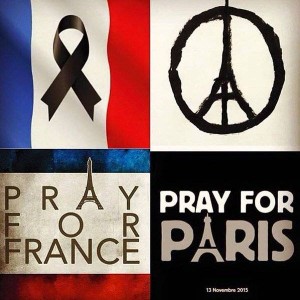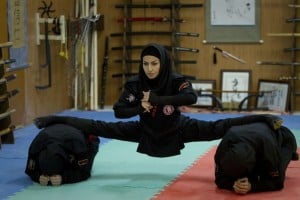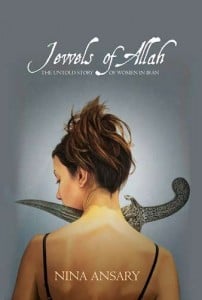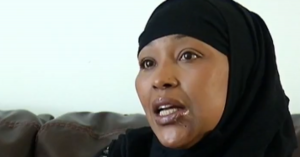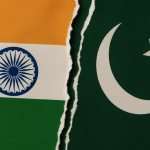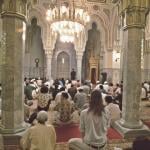Around 4,000 academics, scholars and activists gathered from March 16-18th at Pace University’s annual Left Forum conference. As a recent Occupy activist, I was ecstatic to come across a conference that centers on issues of capitalism and imperialism, along with panels that focus on the importance of feminist discourse to envision an alternative world. The Left Forum has been organized annually for many years and its 2012 theme – “Occupy the System: Confronting Global Capitalism” – was chosen in light of the uprisings in the Arab World and Europe, as well as North America’s Occupy movement, which stemmed out of Wall Street, New York.
The Occupy Movement has been criticized for being a struggle of the white middle-class and heteronormative strata of society. As issues popped up surrounding the movement’s failure to adopt a nuanced and holistic analysis of power that would include how indigenous communities and women and people of colour in particular experience oppression at the hands of capitalism and neo-liberalism, there has been the belief that the movement doesn’t have a place for people in those groups. To some extent, I do agree. Through my experience, which I wrote about in an article for rabble.ca, the struggle of getting people (namely, men) with white heterosexual privilege to begin to unlearn their privileges became exhausting, forcing me to reconsider my position within the movement.
However, besides these frustrations, I was rejuvenated by the female panelists of colour at the Left Forum, who unapologetically called out the hypocrisies of left, progressive organizers and activists who fail to deconstruct race, gender, sexuality and class power dynamics simultaneously. One panel, entitled “Feminisms in the Time of Empire: Complicities, Contestations and Solidarities,” was composed of five women of South Asian and Arab descent who brilliantly discussed how images and discourse of gendered Muslim bodies are produced and embedded in the current capitalist and neo-liberal system. The panel was chaired by Stanford University PhD candidate and member of the Pakistan Solidarity Network, Aisha Ghani. On the panel were Saadia Toor, a teacher at CUNY university in New York; Dina Siddiqi, who teaches at the same university and whose research focuses on Islam, human rights discourses and transnational feminist politics; Maya Mikdashi, a PhD candidate at Columbia University who is also the co-founder and co-editor of Jadaliyya Ezine; Shefali Chanda of Washington State University; and Mitra Rastegar of New York University whose research centres on the racialization of Muslims and Arabs via the U.S. liberal media and activist discourses.
The panelists shared a common theme in that they discussed the ways that Islamophoba, in conjunction with constructions of gender and sexuality, have been formulated and used by secular feminist and human rights activists both in the West and in Muslim countries. Toor succinctly explained the role of the “clash of civilizations” ideology and its use to justify the war in Afghanistan along with increased militarization in Pakistan. Mikdashi examined how Islamophobia and the idea that “gender happens over ‘there’” has been used to frame the struggles of women and LGBT people in the Middle East, and in particular within the journalistic accounts of the Arab uprisings.
However, the most fascinating presentation was that of Dina Siddiqi, who talked about how the hegemonic Western images of Muslim peoples and places have been adopted by progressive feminists and activists, which incorporates these activists into the fabric of neo-liberal and capitalist forms of domination.
Siddiqi’s country of study is Bangladesh, a country that she noted doesn’t have a strategic role for American interests, but which is considered to be religiously moderate compared to its neighbor, Pakistan. Her presentation was based on three points that, although set within the context of Bangladesh, could easily be applied to any location where Muslim women live, including within the borders of North America.
The Mobilization to Rescue Muslim Women and LGBT People
Siddiqi pointed out that the framing and representations of violence against women in the Muslim world have come about as a direct result of problems with Islam and Shari’ah. These frames, according to Siddiqi, not only perpetuate existing stereotypes, but are also used to justify wars, such as the war in Afghanistan, which was examined in Toor’s presentation. Siddiqi argued that the paranoia over Islam has managed to mask other systems of power and context within Muslim countries. The fixation on Islam and Shari’ah as the producers of inequality towards women and LGBT individuals has, in essence, simplified political and economic landscapes in Muslim countries.
The failure to address the implications of neo-liberalism and the restructuring of the global market has created a framework where “good feminists” engage solely with Islam and the fatwas that are uttered from pulpits that are against women. For example, Siddiqi called out Western global feminists, who, “without knowing where Bangladesh is located on a map can draw certain conclusions, from the rape of Muslim women in the country.” She discusses how a script has been developed, where, for instance, Western feminists work under the assumption that Islam forces women to marry their rapists; Muslim women thus end up in a position where they suffer “double victimization,” related both to sexual abuse, and to the abuse forced upon her by the perceived precepts of Islam. Siddiqi further described that the West’s assertion that institutional politics (associated with gender, class, race etcetera) are something only present in the “modern world,” while disregarding institutional dynamics within Muslim states in favour of shallow understandings of power structures, ultimately reproduces the “West is Best” mentality that allows feminists and activists to work alongside Western government’s imperial objectives.
Why Are We Not Heard?
Siddiqi acknowledged that her arguments are not new. Muslim activists, scholars and feminists, like the Canadian Council of Islamic-American Relations, Monia Mazigh and many others, have been working to demystify Islamophobia and imperial ideologies for years, but clearly not much has changed; for example, right-wing governments in Europe have passed anti-Muslim policies, including the banning of the niqab, or the prohibition of minarets. Those of us who theorize and attempt to implement these theories into practice are defending Muslim women and their agency, rather than focusing on their victimization. Yet still, our communities and countries are being affected by hurtful ideologies.
When we speak about how Muslim women are portrayed, we cannot fully examine these images without including images of Muslim men. Siddiqi correctly argues that Muslim men are portrayed in specific ways, as people from whom queer and/or female Muslims need to be rescued. These created dichotomies of the Muslim man as perpetrator and the LGBT and/or female Muslim as the victim, sustains the pillars of neo-liberalism and empire. Mikdashi provided an excellent example of the reinforcement of such images and discourses. The case of Lara Logan, a CBS news reporter who was attacked by a group of men in Tahrir square, fueled headlines on the New York Post that read, “Animals,” and “Find the Beasts.” In these bylines and headlines, Muslim men are homogenized as barbaric and irrational, labels that can be traced in American film, discourse (see Edward Said’s Orientalism) and ideology prior to the events of 9/11. The unfortunate events that Logan had to endure however, are not confined to the Middle East, as it is known that women are sexually violated here in North America every day. However, what Mikdashi highlights is that it is important as activists and feminists to understand that certain gender relations have become racialized. In other words, the relations between Muslim men and women have been made to be something unique and different from non-Muslim gender relations, and much worse and dangerous than relations within (non-Muslim) white and middle-class segments of society. These representations of Muslim men and women, according to Mikdashi are products of an “architecture of discourse,” referring to the intentional uses of ideology and discourse to normalize the racialization of such bodies. The narrative that Muslims, and specifically Muslim men, pose a threat to democracy and civilization as we know it has been essential to the justification for the War in Afghanistan, which has been portrayed as a means of saving burqa-clad women from the Taliban.
The knowledges that were shared from the panelists all worked together to assess how, in Chandra Mohanty’s words, “feminism without borders” can be achieved within a context that seeks to actively vilify Islam in a post-9/11 world. Many of the arguments were positioned within the context of Arab and South Asian Muslim contexts, and for this reason it is easy to argue that the panel would have benefited from the inclusion of African and Asian voices that also experience the pangs of Islamophobia and neo-liberal and capitalist structures of domination. For those of us who live in the West, we must also be wary of being caught in the traps of understanding Islam only within specific geographical boundaries in order to bring to account the various narratives and methods that seek to save us from our Muslim husbands, brothers and sons.


